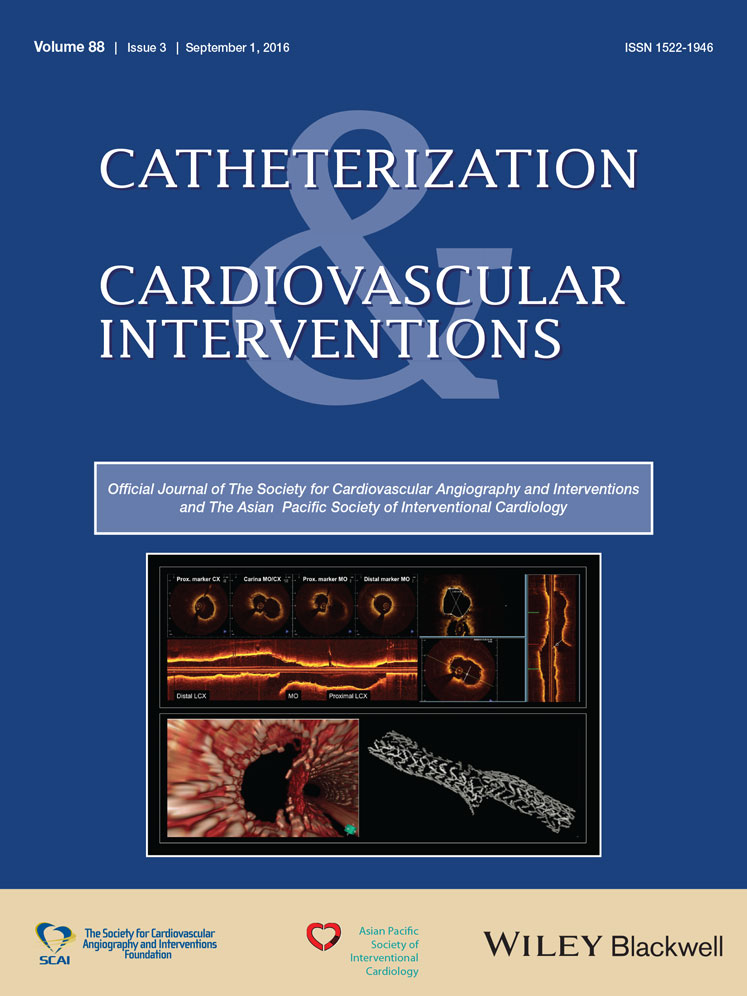Percutaneous closure of post TAVR LV apical pseudoaneurysm
Conflict of interest: Dr. Feldman is a consultant to Abbott, Edwrads, BSC.
Abstract
Left ventricular (LV) apical pseudoaneurysm is a well known complication of myocardial infarction and open heart surgery procedures, and has more recently been described after transapical transcatheter aortic valve replacement (TAVR). Since the natural history includes a high incidence of cardiac rupture and mortality in the 30–45% range within the first year after diagnosis, surgical repair has been the main therapy. More recently, LV pseudoaneurysms have been closed using percutaneous methods. We describe a post-TAVR pseudoaneurysm for which closure was done via retrograde LV access using a vascular plug, and provide a review of recent literature on closure methods and outcomes. © 2015 Wiley Periodicals, Inc.




